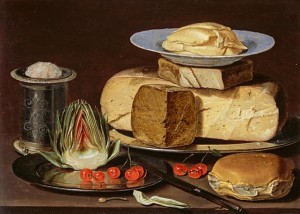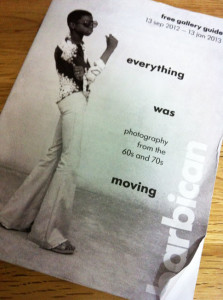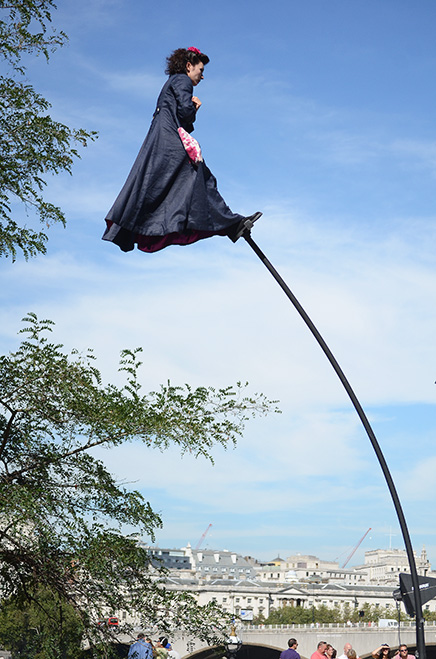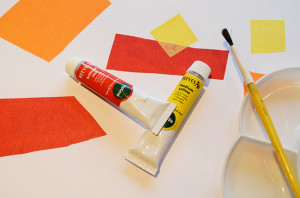Reflections on Assignment Two
This was a challenging assignment that really made me look and think about the images I was trying to create. It was also a task that I particularly enjoyed. I think some images are better than others but overall I was very pleased with what emerged.
As with the last assignment I was fascinated to experience how one idea sparked something else, how simply playing with the different foodstuffs showed what might work and what didn’t. So, for example, I thought that working with sweet peppers would be very straightforward but I just couldn’t find the shapes and angles I was looking for. I did produce a few that made some peppers almost look like a coral reef but I didn’t think they were interesting enough compared to the other images.
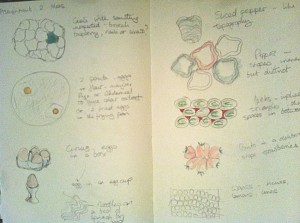
I took the images over a two-week period, allowing time for ideas to germinate and to study what I had already produced. Several times I awoke with a new idea forming that I then tried out. Before I took any photographs I did some sketches in my notebook, working through various ideas for each of the themes before I even put eye to viewfinder. That way I felt I had some sense of what I was looking for when I started to lay out the foodstuffs. The first five or six ideas flowed fairly freely and then things slowed down and I felt I had to work harder to create some new approaches, I felt I was in danger of repeating the same sorts of images just using different foodstuffs. The one that eluded me for most of the time was verticals and horizontals.
I also started to introduce some quirks, things you might not expect to be there like the screw in the cabbage and the pins in the kiwi, things designed to make the viewer do a double take. During this time I came across the still life work of Olivia Parker, which has no doubt served as a source of inspiration and influence, not to claim that my photographs are anything like the quality of hers but they gave me an added sense of enthusiasm and showed that approaches to still life could be surreal and non-traditional.
In terms of the course criteria I worked hard on the design elements of this exercise trying to go with and respond to the characteristics of the foodstuffs I was using and thinking about them in different ways. I used a wide variety of materials from silicon baking sheets to dress-making pins and from raw prawns to turmeric. I would like to think my visual awareness is quite good in terms of framing and thinking about composition, although I am aware some images are stronger than others.
I think the quality of the outcome from this assignment is relatively consistent, I am still working hard on building my technical knowledge but definitely felt more confident in working with the camera this time. I bracketed a number of shots and used a fully manual setting for much of the time. As Autumn rolls in I was very conscious of the quality of the light changing; many of the shots for the exercises to date have been taken at my dining table with good availability of natural light but this light is becoming more unreliable and is available for a shorter timespan. There were various ideas included in my approach this time with influences from still life painting and photography, fashion photography, surrealism and just the plain quirky. At times I felt a bit constrained by the need to work with specific shapes and forms but I hope there is a clear sense of intention behind the various images I have produced.
There is no doubt that as I worked on the assignment my imagination expanded and I was trying to be more playful with the objects. Not least because of my own desire to keep things fresh and interesting. Perhaps this could have been taken further if I were more confident technically. I do feel my voice is developing and my style is emerging but I also want to make the most of this opportunity to experiment and not become too predictable too quickly.
As mentioned before I have done background research into the different approaches to still life from possible Japanese influences in utilising a few elements in a very clean form through to the odd juxtaposition of cauliflower and cross head screw. The use of the screw and the pins in the kiwi were in part intended to be playful but were also prompted by my response to Susan Sontag’s comment about photography being an act of aggression, I think she was primarily referring to the objectification of people but it got me thinking about how this might appear when shooting non-human subjects. Was it possible to show a sense of aggression or to have the capacity to disturb when working with foodstuffs?
It feels like this is was an assignment I could have spent months even years producing and I do want to make sure I take its influences forward.
